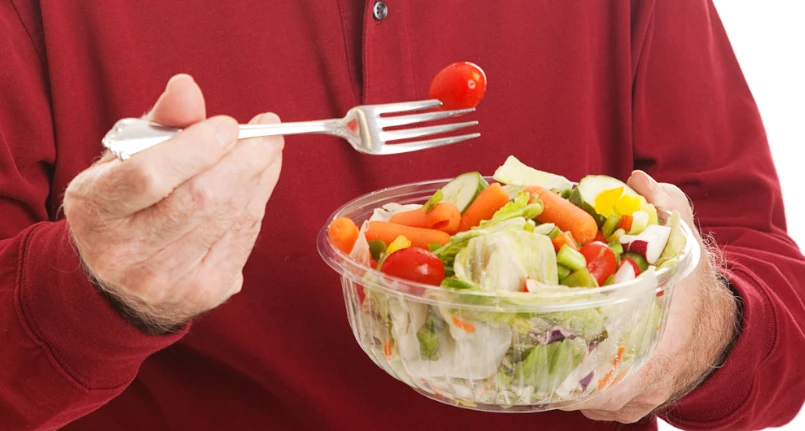The numerous studies conducted on the longest-lived populations demonstrate, in fact, how certain dietary habits significantly affect the duration but above all the quality of life of the most distant decades.
And being able to count on a performing body, able to resist physical fatigue , still responsive to the numerous stresses that everyday life dictates, certainly acts as a solid support for psychic and nervous balance.
For this reason, we will propose 7 dietary cornerstones that can support healthy ageing.
Waterfall
Needless to remember how essential water is for the health of the human body, regardless of age.
Over the years, the state of hydration physiologically tends to decrease, thus progressively reducing muscle tone , metabolic efficiency, cellular turgidity and the body’s thermogenic capacity.
Therefore, preserving the adequate state of hydration is the first anti-aging act to be implemented.
The cardiovascular , nervous, skin and above all muscular systems will benefit .
Protein
Sarcopenia is the key word in the great chapter of aging.
Sarcopenia describes the progressive loss of muscle mass and strength , generally dependent on age and unfortunately responsible for a rapid decline in quality of life.
The spotlights on this condition and the many studies that have taken place in recent years have shown that an adequate intake of dietary protein effectively counteracts the progressive aging of muscle tissue.
The minimum protein quantities currently recommended, evidently in the absence of pathologies such as kidney disease, are 1.1 g per kg of body weight . Need that tends to grow proportionally to the level of physical activity present.
Experts agree in deeming it useful to consume noble proteins , with a high biological value , therefore capable of adequately nourishing the muscle, such as lean white meats , lean fish and egg whites .
Legumes have also proved to be invaluable in supporting muscle function in aging.
Power
For the body, partially debilitated by aging, to respond well to the physical and mental stresses that everyday life imposes, it is of fundamental importance that it is energetically supplied.
It is carbohydrates, in this sense, that constitute the most precious petrol, which should remain the nutrients most represented in the diet of an elderly subject .
Whole grains should be the first choice, useful both to replenish the system with energy and to preserve adequate intestinal order.
On the other hand, fruit, taken according to adequate criteria, would instead supply the quantity of sugars necessary above all for the nervous system to respond well to stressful events.
Fat? Yes, but the “good” ones
Healthy aging cannot be separated from the consumption of fats.
Fats are actively involved in hormonal synthesis, in the structuring and proper functioning of the nervous system, and provide, in certain circumstances, particularly valuable energy. The important thing is to choose the best fats.
Epidemiological studies demonstrate how a high consumption of animal fats can negatively influence the course of ageing, compromising the health of the nervous system as well as the cardiovascular system; on the contrary instead of what fats coming from extra virgin olive oil do , rather than from dried fruit or oilseeds . Indeed , the cocktail of monounsaturated and polyunsaturated fatty acids , fat-soluble vitamins and antioxidants makes these foods a real anti-aging drug.
Combined with the omega 3 fatty acids found in oily fish , they would help defend the body from inflammatory events.
Fibers for intestinal health
Our intestine is inhabited by a myriad of microorganisms , bacteria , fungi and viruses , the balance of which is able to direct the state of health.
Aging undermines this balance, allowing potentially pathogenic bacteria to take over those with protective functionality.
The fibers present in vegetables , whole grains and fruit, in addition to providing nutritional substrate for protective microorganisms disseminated in the alimentary canal, could, in association with pigments with antioxidant activity, help restore an adequate intestinal structure, thus improving its barrier.
And a healthy intestine is generally the mirror of a healthy and active organism.
Vitamin D
It is a very important vitamin, with diversified roles, both in bone and extra-bone metabolism.
The most recent scientific evidence sees it actively involved in supporting the functionality of the immune system , especially in the most fragile subjects, such as the over 65s, and in actively assisting the functionality and structure of the muscle tissue.
Mainly produced by our body through a complex series of biochemical reactions, triggered by sunlight , Vitamin D is still present, albeit in small quantities, in various foods. To maintain a good balance, adequate exposure to sunlight for 20-40 minutes is therefore suggested.
Antioxidants
For many experts, the strong point of an anti-aging diet is precisely the content of antioxidants, yellow-orange, red-purple and green pigments present in fruit and vegetables .
Anthocyanins , catechins , flavonones, isoflavones but also the better known vitamins A , C and E are just some of the protagonists of the antioxidant action of the diet.
Capacity measurable through a parameter known as ORAC, capable of defining the protective force of a diet against free oxygen radicals.
An adequately balanced diet in this sense would therefore be able to shield the nervous system, the cardiovascular system but also the musculoskeletal system from the damaging and aging action of free radicals.




